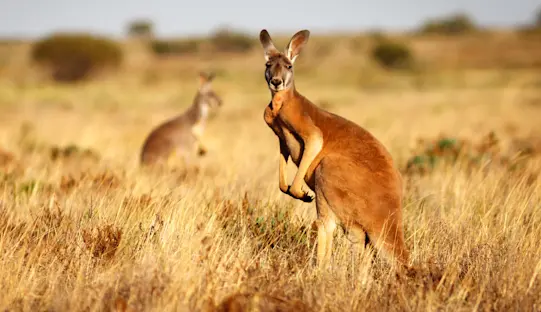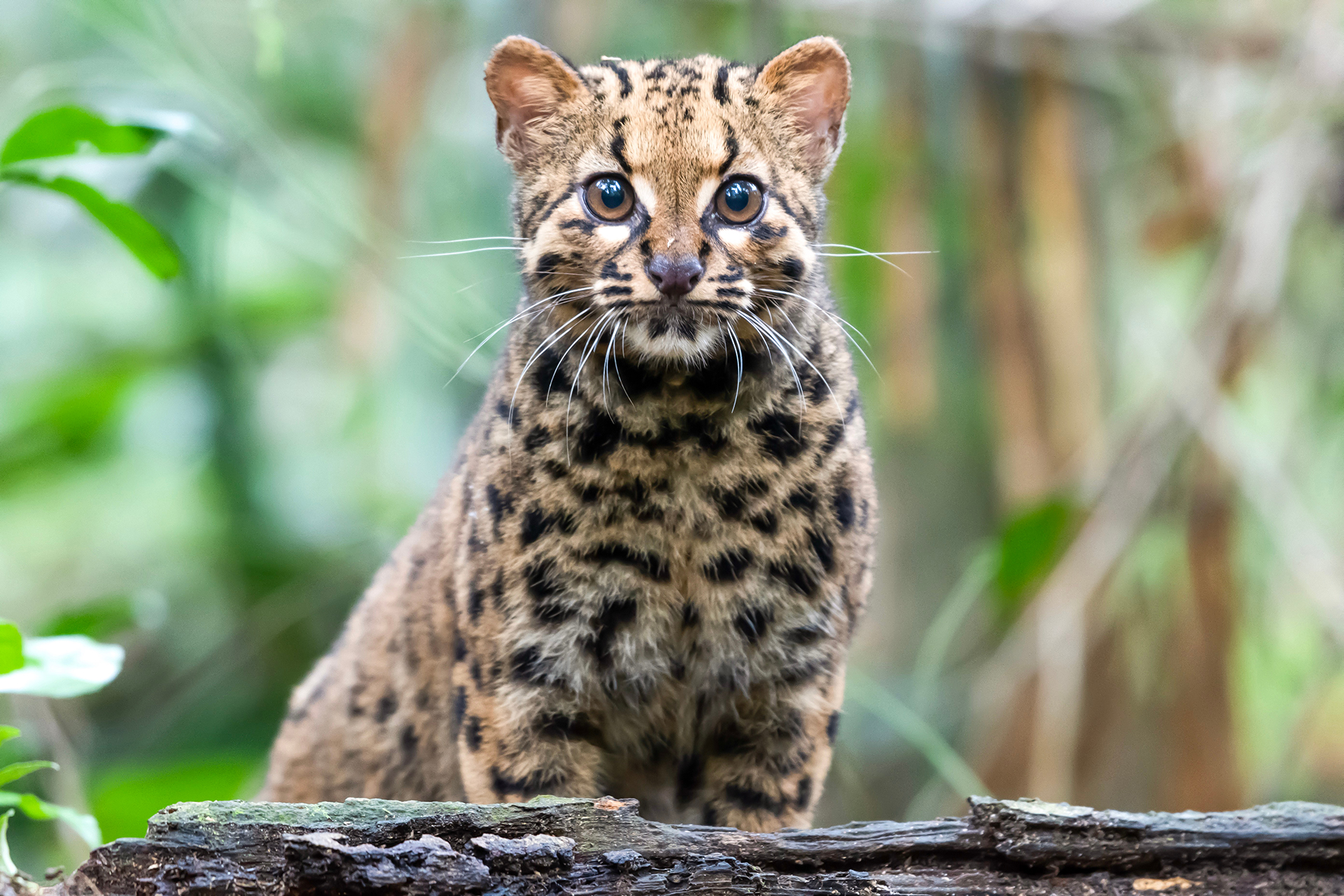Deep in the heart of Borneo’s rainforests, some of the world’s most remarkable wildlife still thrives. On Nat Hab’s Wilds of Borneo: Orangutans & Beyond adventure, guests encounter orangutans and sun bears, trek through the Danum Valley in search of gibbons and the slow loris, and scout for pygmy elephants and proboscis monkeys along the Kinabatangan River. Among the rarest creatures—with sightings extremely uncommon—is a ghost of the canopy: the marbled cat.
Big cats like lions and leopards often dominate conservation headlines. Yet their smaller, lesser-known relatives deserve attention, too. One of the most mysterious is the marbled cat (Pardofelis marmorata), a small, secretive feline cloaked in a coat so striking it has sadly made the species a target for poaching. With a status listed as Near Threatened by the IUCN, this elusive feline is as fascinating as it is vulnerable.
Where to Find Marbled Cats
Marbled cats inhabit a fragmented range that stretches from the Himalayan foothills of eastern India and Nepal through southern China and Southeast Asia, extending to Sumatra and Borneo. Despite their broad geographic spread, populations are sparse and largely confined to dense primary forests—though they’ve occasionally been spotted in logged areas, remnant forest patches within agricultural zones, and even in isolated secondary growth.
In Borneo, one marbled cat was observed in forest regrowth just six years after logging, while others have turned up in coffee plantations on Sumatra. These agile climbers are mostly arboreal, spending long hours in the canopy and using their surroundings to stay hidden. One was even recorded descending a tree head-first—a maneuver usually seen only in margays and clouded leopards.
Still, even basic information about the species remains limited. In fact, only one individual—a radio-collared female in Thailand—has ever been tracked in the wild. Her home range spanned just over 2 square miles (5 square kilometers), and her movements offered one of the few glimpses into the marbled cat’s ecology.

The elusive clouded leopard
What Makes the Marbled Cat Unique?
The marbled cat’s lush, cloud-like patterning gives it an uncanny resemblance to a miniature clouded leopard. Its thick, soft coat is marked with large, irregular blotches outlined in black. The fur is often gray-brown or reddish, with three dark stripes on its neck and crown. Its pelt—tragically—has made it a target for the illegal fur trade.
Weighing just 4 to 11 pounds, the marbled cat is about the size of a domestic feline, but it possesses the longest tail relative to body size of any cat species in the world. This bushy, black-tipped tail can even exceed the length of the body and head combined, helping the cat stay balanced as it navigates life in the trees.
Other physical features include a rounded head, wide forehead, large brown eyes, and short, rounded ears with a gray bar on the back.
Elusive Behavior—Or Not?
Surprisingly, what we “know” about marbled cat behavior is often contradicted by new observations. Though thought to be nocturnal or crepuscular, camera trap studies have recorded daytime activity. Similarly, while it was once considered strictly arboreal, more recent camera trap footage shows the cats walking confidently on the ground.
Despite its reputation for shyness, there have been surprising encounters with humans. One cat was found calmly resting just three feet from a researcher in Borneo, while another was seen sitting in the middle of a road during a night survey. These moments raise questions about how elusive the species truly is.
Once believed to be solitary, marbled cats have been recorded traveling in pairs in Thailand, Laos and Sumatra—though it’s still unclear whether these were mated pairs or siblings.
What Do Marbled Cats Eat?
Very little is known about the marbled cat’s diet. It’s assumed they prey mainly on arboreal mammals like squirrels and rodents. There are a few reports of individuals stalking birds in the canopy and one preying on a young Phayre’s leaf monkey.
Reproductive data is also sparse, based solely on two captive births. These show litters of one to four kittens, with a gestation period of about 66–81 days. The young weigh around 100–115 grams at birth, open their eyes at about two weeks, and reach sexual maturity by two years. They’ve been known to live up to 12 years in captivity.
Their vocalizations are similar to domestic cats, with some reports describing a twittering meow. Purring is rare.

Conservation Challenges for a Cat Few Have Seen
Like their larger cousins, marbled cats face mounting threats from habitat loss and illegal wildlife trade. Southeast Asia continues to lose tropical forest at one of the fastest rates on Earth, largely due to logging and conversion to palm oil, coffee and rubber plantations.
Poaching is also a concern. These cats are often killed for their fur or meat, and indiscriminate snare traps take a toll on small wild cats as well.
Unfortunately, conserving a species that’s rarely seen and poorly understood presents unique challenges. It’s easier to build public support for lions or tigers—animals you can witness on safari—than for an invisible feline hiding in the canopy.
But rarity does not equal insignificance. Losing the marbled cat would mean losing an extraordinary piece of Southeast Asia’s biodiversity.
> Learn More: WWF Conservation in Borneo
How You Can Help
Even if you never see a marbled cat in the wild, your travel choices can still have a positive impact. Responsible ecotourism sends a powerful signal that healthy forest ecosystems have long-term value that far outweighs short-term exploitation.
Nat Hab’s conservation travel model helps protect these habitats, supports local communities and raises awareness for wildlife that too often goes overlooked. Consider joining us on The Wilds of Borneo: Orangutans & Beyond, where your presence directly supports the protection of the forests these rare cats call home. While marbled cat sightings are rare, your visit helps ensure that they—and the forests they depend on—have a future.
Ready to start planning a Borneo adventure? Learn what’s in store on this tropical safari, from night walks in search of nocturnal creatures to a private tour of a sun bear rehabilitation center. Get tips from Nat Hab Expedition Leader Court Whelan, plus learn all about our special Borneo Photo Expeditions, too!































